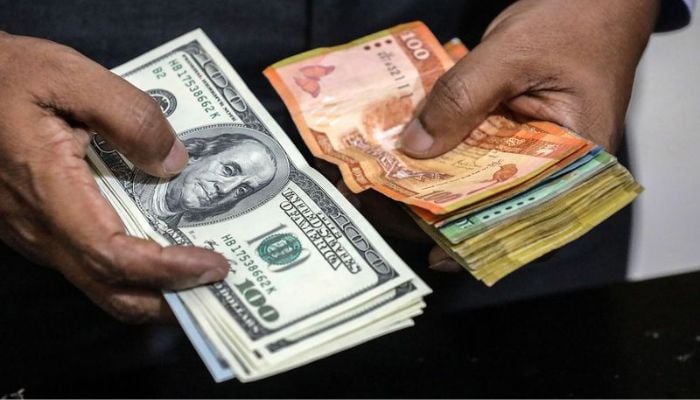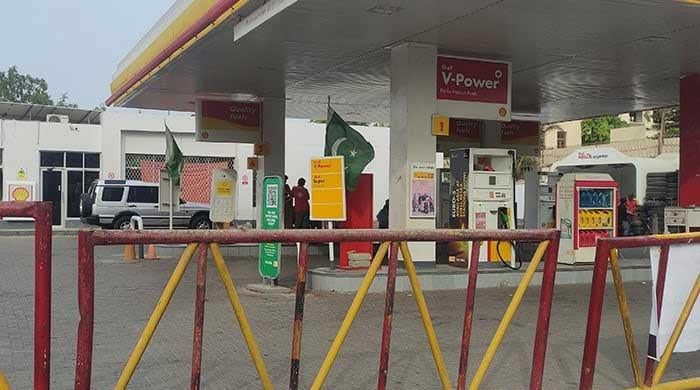Pakistan, Sri Lanka, India debt woes draw eerie parallels to 1997-style crisis
South Asia's economic and political instability this summer draws eerie parallels to the Asian Financial Crisis 25 years ago, Bloomberg reports
August 05, 2022

- Economic and political turbulence is rattling South Asia.
- South Asia has the same vibes as Southeast Asia in 1997, say experts.
- The fault lines started to show this spring.
Pakistan is desperately seeking a rescue to avoid a debt default as its currency plummets. Bangladesh has asked the International Monetary Fund for a pre-emptive loan. Sri Lanka's government has fallen after defaulting on its sovereign debt. Even India's rupee has plummeted to all-time lows as its trade imbalance widens.
A report by Bloomberg states that South Asia is experiencing economic and political unrest this summer, drawing eerie parallels to the volatility that consumed neighbours to the east a quarter-century ago in what became known as the Asian Financial Crisis.
What appeared to be an isolated incident at the time — Thailand's baht devaluation to deal with currency speculation in July 1997 — spread like a virus to Indonesia, Malaysia, and South Korea. Panicked lenders demanded early repayments, and investors fled emerging-market equities and bonds, particularly those in Latin America and Russia, which defaulted on some of its debt in August 1998. Long-Term Capital Management, a hedge fund that had made highly leveraged bets on Russian and Asian stocks, failed a month later.
Can something like this happen again? According to Ammar Habib Khan, chief risk officer at Karandaaz Pakistan, an Islamabad-based NGO focusing on financial inclusion thinks it can. During the last decade, South Asian countries “had a big party on low-cost dollar debt, funding consumption and vanity projects during the last 10 years,” he told Bloomberg. “South Asia has the same vibes as Southeast Asia in 1997.”
When the US Federal Reserve escalated interest-rates to battle inflation this spring, the fault lines became visible. This triggered a chain reaction in South Asia, where inflation is also raging. Easy money ran out, currencies fell in value, and foreign exchange reserves dwindled.
A prolonged crisis would sap dynamism in a region that is home to a quarter of the world's population and its fastest-growing major economy, India, jeopardising expansion plans for corporations that have staked their future on the region, such as Amazon.com Inc. and Walmart Inc.
So far, the contagion appears to be controlled. One explanation is that the so-called Asian economic miracle of 1997 hid vulnerabilities that are less widespread today: excessive public and private debt, weak banks, and highly speculative foreign investment. South Asian countries also owe less to outsiders, having borrowed more in local currencies rather than dollars to fund expansion in the 1990s than neighbouring countries did.
The IMF, which is in various stages of negotiating prospective loans with the most battered economies, appears to be more patient as well. During the previous crisis, the global lender placed draconian austerity measures on floundering governments. Experts predict that it will not repeat the same strategy this time. “I do not think there is a standard answer such as belt-tightening,” said Raghuram Rajan, a professor at the University of Chicago Booth School of Business and former governor of the Reserve Bank of India, to Bloomberg. “Indeed, poorer households may benefit from some targeted government help if we are to maintain social harmony.”
Nonetheless, there are numerous warning indications. The region has been hit hard by fuel and food shortages, as well as an inflationary rise brought on in part by Russia's war in Ukraine. In Sri Lanka and Pakistan, political upheaval has erupted.
Government rationing has resulted in uncertainty of power outages that have lasted 12 hours in Pakistan and five hours in Bangladesh. "Sometimes lights go off in the evening, sometimes in the middle of the night," says Shawon Mondol, 18, a college student from Madhukhali, roughly 90 miles south of Dhaka. "This is in addition to the midday power outages." I'm finding it difficult to concentrate on my studies."
Capital is on the run. According to the Washington-based Institute of International Finance, even countries that export commodities and profited from a strong dollar earlier this year are suffering from broad-based outflows.
Pakistan's currency, the Pakistani rupee, has reached a new low, placing it last among the countries tracked by the IIF. Its sovereign debt rating is in the junk range. In order to get an IMF bailout, the new administration raised diesel prices roughly 100 percent and energy costs nearly 50 percent within a few months. Pakistan similarly put a tax on retailers to increase revenue, sparking nationwide protests. When the pandemic hit, international institutions and other countries “had a greater sense of concern for the global economy,” says Finance Minister Miftah Ismail. “That’s missing now.” He insists Pakistan is weathering the storm with the help of self-imposed budget cuts and by depressing demand for imports.
Fuel shortages are stoking widespread anxiety and inflating import bills in Bangladesh, which has a stable credit rating and is regarded as a rising star among so-called frontier economies by many economists. The normally robust garment industry, which accounts for more than 80% of exports, is facing an energy shortage at home as well as a slowdown in overseas orders. Bangladesh has requested IMF aid, which Dhaka authorities stress is preemptive and not to be confused with the bailout funds sought by Sri Lanka and Pakistan.
The difficulties in Sri Lanka are the most complicated. Its administration was overthrown as a result of significant protests over fuel shortages and government incompetence. And it has failed to meet the prerequisites for further IMF assistance, such as creditor agreements to reduce existing debt. “Everybody is in queues,” says Ravith Silva, head of Motor Link Holdings, an auto engineering company in Colombo. A barrel of engine oil that two years ago cost 150,000 to 200,000 Sri Lankan rupees ($414 to $552) now fetches one million, he says. Paint prices have risen almost 900%. “Prices are changing so fast that we cannot give a quote that is valid for more than three days.”
Sri Lanka is negotiating with China for up to $4 billion in aid, including a restructure of a $1 billion Chinese loan due this year, according to Palitha Kohona, Colombo's ambassador to China, on July 15. According to him, China is responsible for 10% of Sri Lanka's external debt.
The hope is that India can serve as a stable anchor, as China did for East Asia a quarter-century ago. Since the previous crisis, which largely spared the country, India's foreign currency reserves have expanded twentyfold. Its stock markets have skyrocketed as investors gamble on its massive consumer market. However, the Indian rupee's decline versus the dollar, along with Fed tightening, has put additional strain on India's ability to finance imports, which have become more expensive as the Indian rupee has fallen.
The central bank, the Reserve Bank of India, has been forced to utilise some of its $600 billion war fund after investors withdrew over $29 billion from local equities this year, while it still has enough to cover imports for about nine months. The Reserve Bank of India has hiked interest rates and is anticipated to tighten further to reduce inflation, with Governor Shaktikanta Das vowing a soft landing. A community of over 1.5 billion individuals can only hope for the same.











